Related Research Articles

Ernest Orlando Lawrence was an American nuclear physicist and winner of the Nobel Prize in Physics in 1939 for his invention of the cyclotron. He is known for his work on uranium-isotope separation for the Manhattan Project, as well as for founding the Lawrence Berkeley National Laboratory and the Lawrence Livermore National Laboratory.

The National Superconducting Cyclotron Laboratory (NSCL), located on the campus of Michigan State University was a rare isotope research facility in the United States. Established in 1963, the cyclotron laboratory has been succeeded by the Facility for Rare Isotope Beams, a linear accelerator providing beam to the same detector halls.
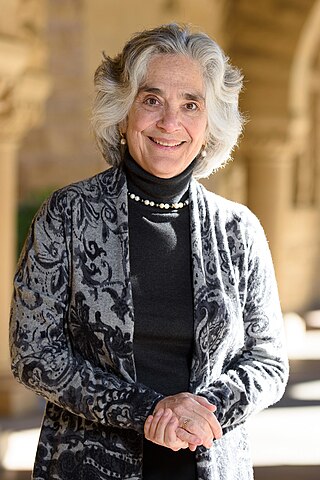
Persis S. Drell is the Provost Emerita and the James and Anna Marie Spilker Professor in the Stanford University School of Engineering, a professor of materials science and engineering, and a professor of physics. Prior to her appointment as provost, she was dean of the Stanford School of Engineering from 2014 to 2017 and director of the US Department of Energy’s SLAC National Acceleratory Laboratory from 2007 to 2012.
The A.I. Alikhanyan National Science Laboratory is a research institute located in Yerevan, Armenia. It was founded in 1943 as a branch of the Yerevan State University by brothers Abram Alikhanov and Artem Alikhanian. It was often referred to by the acronym YerPhI. In 2011 it was renamed to its current name A.I. Alikhanyan National Science Laboratory.
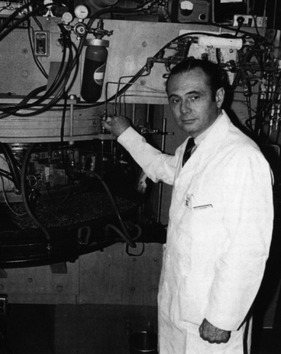
Michel Matthew Ter-Pogossian was an American medical physicist. He was professor of radiology at the Washington University School of Medicine for over 30 years. A pioneer in nuclear medicine, he is best known for his research on the positron emission tomography (PET). He is considered one of its creators and often referred to as the "father of PET."
The Joint Institute for Nuclear Astrophysics Center for the Evolution of the Elements (JINA-CEE) is a multi-institutional Physics Frontiers Center funded by the US National Science Foundation since 2014. From 2003 to 2014, JINA was a collaboration between Michigan State University, the University of Notre Dame, the University of Chicago, and directed by Michael Wiescher from the University of Notre Dame. Principal investigators were Hendrik Schatz, Timothy Beers and Jim Truran.

Abram Isaakovich Alikhanov was a Soviet experimental physicist of Armenian origin who specialized in particle and nuclear physics. He was one of the Soviet Union's leading physicists.

Hendrik Schatz is a professor of Nuclear Astrophysics at Michigan State University. He earned his Diploma from the University of Karlsruhe in 1993, and his PhD from the University of Heidelberg in 1997 after completing his thesis work at the University of Notre Dame. He is one of the Principal Investigators for the Joint Institute for Nuclear Astrophysics and is a leading expert on nuclear astrophysics,. Schatz also serves the science advisory committees for the Facility for Rare Isotope Beams and GSI. Hendrik's primary field of expertise is Type I X-ray Bursts. His most notable contribution to this field is the discovery of the SnTeSb-cycle. Hendrik was featured in Science magazine November 22, 2002 for his work on experimental nuclear astrophysics. Hendrik has also contributed to Physics Today.

Ashot Chilingarian is an Armenian physicist known for his contributions to the fields of high-energy astrophysics, space weather, and high-energy atmospheric physics. He is the head of the Cosmic Ray Division (CRD) and the director of the Alikhanyan Physics Institute in Armenia.

Bernard Waldman was an American physicist who flew on the Hiroshima atomic bombing mission as a cameraman during World War II.
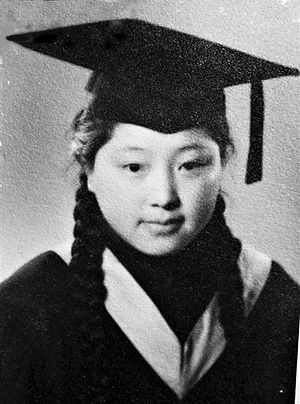
Professor He Zehui or Ho Zah-wei was a Chinese nuclear physicist who worked to develop and exploit nuclear physics in Germany and China.

Njema Frazier is a nuclear physicist at the Department of Energy's National Nuclear Security Administration (NNSA) in Washington, D.C.
Robert Graham Hamish Robertson is a Canadian–American experimental physicist, specializing in neutrino physics. He is a Professor Emeritus at the University of Washington, where he was formerly the director of the University of Washington's Center for Experimental Nuclear Physics and Astrophysics.
Marielle Chartier is a Professor of Particle Physics at the University of Liverpool in England. Her research investigates the phase diagram of nuclear matter using the ALICE experiment at the Large Hadron Collider (LHC) at CERN Her past work includes nuclear structure at the frontiers of the valley of stability.
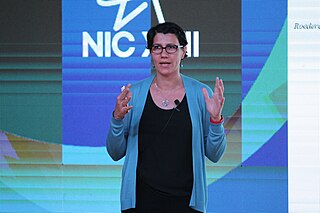
Artemisia (Artemis) Spyrou is an experimental nuclear astrophysicist and professor at Michigan State University. She is also the Associate Director for Education and Outreach at the National Superconducting Cyclotron Laboratory. She was the recipient of a NSF CAREER Award.
Marianna S. Safronova is an American scientist involved in theoretical atomic physics.
Rebecca A. Surman is an American theoretical physicist known for her research on nucleosynthesis, the processes that created the atoms in the universe, and particularly on the r-process for creating heavy atomic nuclei in high-energy cosmic events including supernovae, black hole collisions, and gamma-ray bursts. She is a professor of theoretical nuclear physics and astrophysics at the University of Notre Dame.
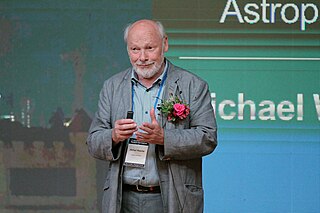
Michael C. F. Wiescher is a German-American experimental nuclear physicist and astrophysicist, known for his laboratory research in nuclear physics connected with various astrophysical phenomena such as stellar evolution and explosion environments.
Carolyn C. Kuranz is an American plasma physicist whose research involves the use of high-powered lasers at the National Ignition Facility both to help develop inertial confinement fusion and to study how matter behaves in conditions similar to those in shock waves in astrophysics. She is an associate professor at the University of Michigan, in the Department of Nuclear Engineering and Radiological Sciences.
Tina Asatiani was an Armenian physicist of Georgian origin. Academician of the National Academy of Sciences of the Republic of Armenia (1996), doctor of physical and mathematical sciences (1971), professor (1974). Honored Worker of Science and Technology of the Armenian SSR (1980). Winner of the Lenin Prize (1970). Founder of the Georgian charity community in Armenia, "Iveria."
References
- 1 2 3 4 "Ani Aprahamyan". sci.am. National Academy of Sciences of Armenia. Archived from the original on 21 February 2020.
- 1 2 3 "Ani Aprahamian". physics.nd.edu. University of Notre Dame. Archived from the original on 25 July 2019.
- 1 2 3 4 5 6 7 8 9 10 "Women Lead: Ani Aprahamian". womenlead2016.nd.edu. University of Notre Dame. Archived from the original on 21 February 2020.
- 1 2 3 4 McCool, Deanna Csomo (July 17, 2019). "Notre Dame physicist launches operations of cyclotron in Armenia". science.nd.edu. University of Notre Dame. Archived from the original on 21 February 2020.
- 1 2 3 4 5 6 7 8 9 10 11 12 "Ani Aprahamian" (PDF). science.osti.gov. U.S. Department of Energy Office of Scientific and Technical Information. 2014. Archived from the original (PDF) on 21 February 2020.
- 1 2 3 4 5 "Head of Armenia's National Science Lab Aprahamian to Speak at MIT". The Armenian Mirror-Spectator . November 1, 2018. Archived from the original on 1 November 2018.
- 1 2 3 4 5 "SCIENCE, TECHNOLOGY, AND EDUCATION IN ARMENIA ~ A Conversation with Prof. Ani Aprahamian". naasr.org. National Association for Armenian Studies and Research. January 12, 2020. Archived from the original on 21 February 2020.
- ↑ "After Midnight: Ani Aprahamyan". 1tv.am. Public Television of Armenia. 29 May 2019.
- 1 2 3 4 "Ani Aprahamian Full CV" (PDF). physics.nd.edu. University of Notre Dame. Archived from the original (PDF) on 21 February 2020.
- ↑ "APS Fellow Archive". American Physical Society. Archived from the original on 21 February 2020.
Aprahamian, Ani [1999] University of Notre Dame Citation: For showing the existence of multiphonon vibrational excitations in the low-energy spectra of both spherical and deformed nuclei. Nominated by: Division of Nuclear Physics
- ↑ "AAAS Fellows" (PDF). aaas.org. American Association for the Advancement of Science. Archived from the original (PDF) on 17 November 2019.
- ↑ "NSAC members 2014". science.osti.gov. U.S. Department of Energy Office of Scientific and Technical Information. 8 May 2015. Archived from the original on 21 February 2020.
- ↑ Goethals, Shelly (October 18, 2016). "Aprahamian to co-chair U.S. Electron Ion Collider Facility Study". science.nd.edu. University of Notre Dame. Archived from the original on 22 February 2020.
- ↑ "Ani Aprahamian". jinaweb.org. Joint Institute for Nuclear Astrophysics. Archived from the original on 22 February 2020.
- ↑ "President Sargsyan receives renowned scientists Yuri Oganessian and Ani Aprahamian". Armenpress. 6 November 2017. Archived from the original on 21 February 2020.
- ↑ Daghdigian, Hovsep (May 9, 2018). "New Armenian President Visits Yerevan Physics Institute". Armenian Weekly . Archived from the original on 12 August 2019.
- ↑ Sirekanyan, Tigran (22 September 2018). "Cyclotron to be put into operation in Armenia until end of year". Armenpress. Archived from the original on 21 February 2020.
- ↑ Hakobyan, Gohar (October 8, 2019). "A major reorganization is needed across Armenia". Aravot . Archived from the original on 21 February 2020.
- ↑ Hunt, Emily (April 27, 2020). "ND professor uses nuclear physics to fight COVID-19 in Armenia". The Observer . University of Notre Dame. Archived from the original on 3 April 2021.
- ↑ "Ani Aprahamian". scholar.google.com. Google Scholar.